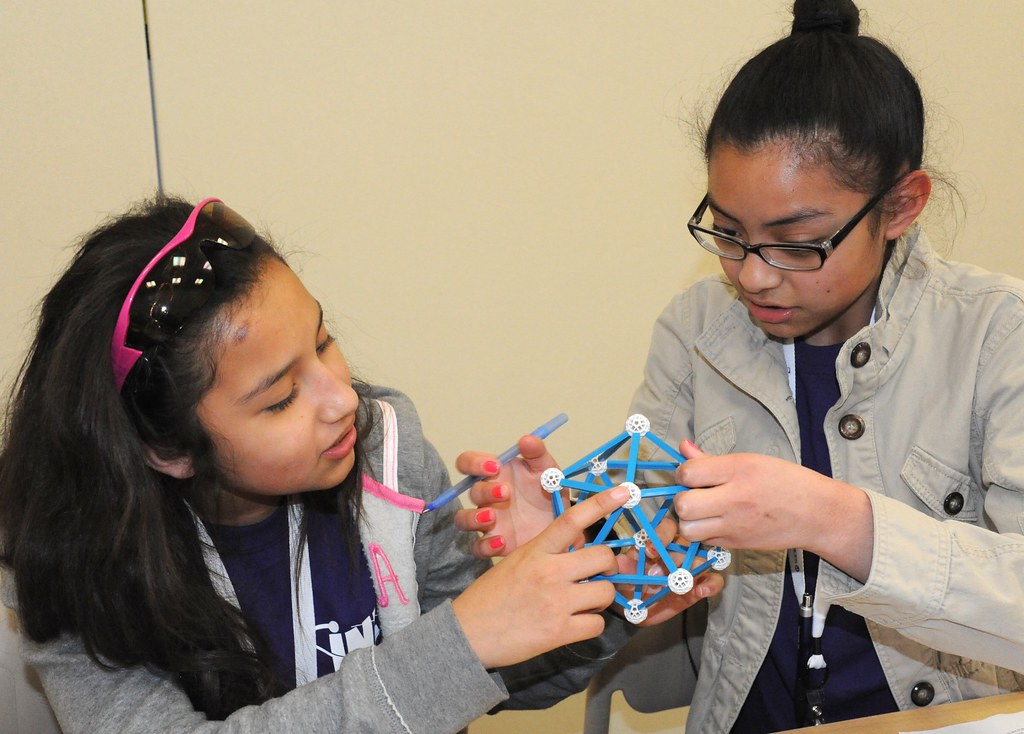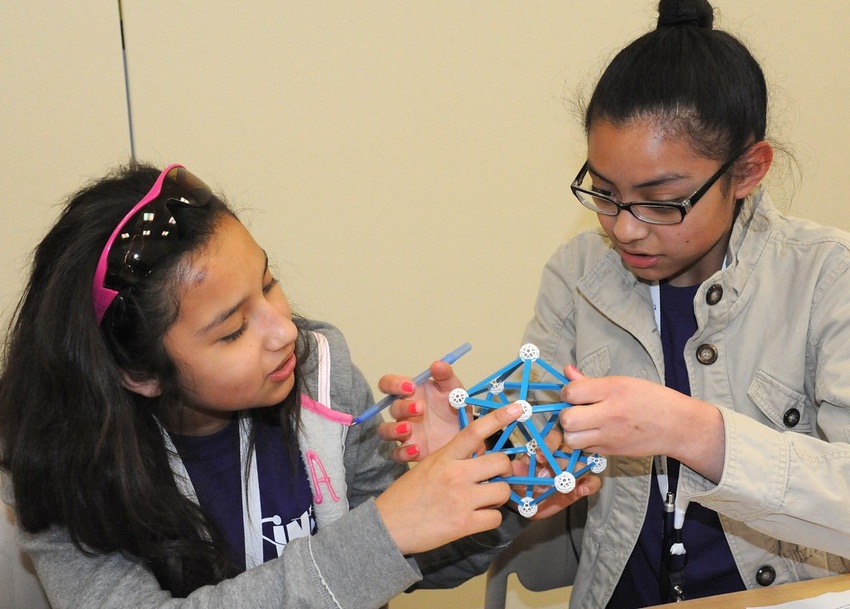STEM (Science, Technology, Engineering, and Mathematics) education is essential, equipping students with critical thinking, problem-solving, and innovative skills needed for success. This type of learning not only fuels interest in science and technology careers but also fosters a curiosity and love for learning that benefits individuals well into adulthood. STEM education shapes students into future leaders and changemakers, preparing them to thrive in a modern workforce and society. However, there is a growing disinterest in STEM among young people, and many schools are struggling to maintain these crucial programs.
With limited resources, schools today face significant challenges in supporting STEM, impacting students' readiness and overall learning. Recent statistics reveal that only about 20% of high school graduates are prepared for college-level STEM courses. Additionally, systemic barriers, such as grade requirements and standardized tests, often dissuade high school students from enrolling in advanced courses to protect their GPAs, which can lead to the reduction or deprioritization of these programs. These setbacks indicate a skills gap that could be bridged with creative and effective programming solutions.
This STEM Day, we celebrate the importance of partnership and collaboration in offering dynamic programs that complement school curricula and nurture a lifelong interest in STEM for eager young minds.
Innovative Approaches to Strengthening STEM Education
Studies show that early and diverse STEM exposure helps students grasp its importance, potentially encouraging them to pursue related higher education or careers. Offering multiple avenues for children to connect with STEM—from digital tools and online learning to field trips, clubs, and community-based programs—can make a significant impact.
Community-based programs are essential in supporting classroom education. Corporations and organizations can play a vital role by investing in and reshaping STEM education within their communities. Supporting STEM initiatives not only addresses educational gaps and offers fresh learning pathways but also invests in a future workforce skilled in STEM fields.
Expanding Learning Beyond the Classroom with Community Programs
Extracurricular programs are proven to sustain STEM engagement, and research shows that students involved in STEM activities outside of school develop more positive attitudes toward the subject, which correlates with greater achievement. A study in 2023 linked participation in STEM extracurriculars to increased interest in STEM careers, with many students valuing out-of-classroom STEM experiences more than traditional classes, citing positive instructor interactions and the development of critical skills like perseverance.
Community-driven learning extends beyond the classroom experience, alleviating some of the resource constraints schools face by offering learning opportunities that support curriculum goals. These informal programs can particularly inspire confidence among youth, especially girls and underrepresented groups, fostering their interest in STEM.
A Flourishing Community STEM Program in Connecticut
Communities have significant potential to bolster STEM education. The Mill River Park Collaborative in Stamford, Connecticut, partnered with Henkel Researchers’ World, exemplifies how corporations and community organizations can work together to promote STEM education year-round.
Henkel Researchers’ World, an international educational initiative, aims to ignite scientific curiosity in elementary-aged children by immersing them in the role of researchers. Originally launched in Düsseldorf, Germany, in 2011, it has since engaged over 100,000 children globally. With a focus on scientific methods and topics like green energy, this program expanded to North America in 2021. In Stamford, Henkel and Mill River Park Collaborative introduced a dedicated classroom with modern lab equipment at the Whittingham Discovery Center, where trained teen docents operate a mobile "discovery cart" for 20-minute science lessons.
This partnership has significantly impacted the Stamford community. Since its 2021 launch, 5,000 children have participated in the Henkel Researchers’ World program, which has been adopted by local schools for district-wide fourth-grade science curriculum requirements. The success story extends beyond the students, as seen with Mila Prakapenka, a former docent who is now studying electrical engineering and computer science at Duke University. Prakapenka shared that her experience teaching solar lessons sparked her passion for STEM, illustrating the value of early STEM exposure outside the traditional classroom.
Community Partnerships: A Vital Resource for STEM
Collaborations like the one between Henkel and Mill River Park Collaborative show the transformative potential of community partnerships in enriching STEM education. By creating engaging, low-pressure environments, these programs encourage students to dive deeper into science and technology.
As Kristia Janowski, Director of Education and Sustainability at Mill River Park Collaborative, noted, “Our partnership with Henkel is about enriching the community and inspiring kids to explore science both in and out of the classroom. We are designing a curriculum that meets the needs of future generations and exposes more young minds to STEM, bridging educational gaps.”
For STEM education to flourish, community leaders, educators, and corporations must continue to work together, finding innovative learning approaches that extend beyond the classroom. Investing in such programs supports the broader education system and can have a lasting, positive impact on both students and the community.
With limited resources, schools today face significant challenges in supporting STEM, impacting students' readiness and overall learning. Recent statistics reveal that only about 20% of high school graduates are prepared for college-level STEM courses. Additionally, systemic barriers, such as grade requirements and standardized tests, often dissuade high school students from enrolling in advanced courses to protect their GPAs, which can lead to the reduction or deprioritization of these programs. These setbacks indicate a skills gap that could be bridged with creative and effective programming solutions.
This STEM Day, we celebrate the importance of partnership and collaboration in offering dynamic programs that complement school curricula and nurture a lifelong interest in STEM for eager young minds.
Innovative Approaches to Strengthening STEM Education
Studies show that early and diverse STEM exposure helps students grasp its importance, potentially encouraging them to pursue related higher education or careers. Offering multiple avenues for children to connect with STEM—from digital tools and online learning to field trips, clubs, and community-based programs—can make a significant impact.
Community-based programs are essential in supporting classroom education. Corporations and organizations can play a vital role by investing in and reshaping STEM education within their communities. Supporting STEM initiatives not only addresses educational gaps and offers fresh learning pathways but also invests in a future workforce skilled in STEM fields.
Expanding Learning Beyond the Classroom with Community Programs
Extracurricular programs are proven to sustain STEM engagement, and research shows that students involved in STEM activities outside of school develop more positive attitudes toward the subject, which correlates with greater achievement. A study in 2023 linked participation in STEM extracurriculars to increased interest in STEM careers, with many students valuing out-of-classroom STEM experiences more than traditional classes, citing positive instructor interactions and the development of critical skills like perseverance.
Community-driven learning extends beyond the classroom experience, alleviating some of the resource constraints schools face by offering learning opportunities that support curriculum goals. These informal programs can particularly inspire confidence among youth, especially girls and underrepresented groups, fostering their interest in STEM.
A Flourishing Community STEM Program in Connecticut
Communities have significant potential to bolster STEM education. The Mill River Park Collaborative in Stamford, Connecticut, partnered with Henkel Researchers’ World, exemplifies how corporations and community organizations can work together to promote STEM education year-round.
Henkel Researchers’ World, an international educational initiative, aims to ignite scientific curiosity in elementary-aged children by immersing them in the role of researchers. Originally launched in Düsseldorf, Germany, in 2011, it has since engaged over 100,000 children globally. With a focus on scientific methods and topics like green energy, this program expanded to North America in 2021. In Stamford, Henkel and Mill River Park Collaborative introduced a dedicated classroom with modern lab equipment at the Whittingham Discovery Center, where trained teen docents operate a mobile "discovery cart" for 20-minute science lessons.
This partnership has significantly impacted the Stamford community. Since its 2021 launch, 5,000 children have participated in the Henkel Researchers’ World program, which has been adopted by local schools for district-wide fourth-grade science curriculum requirements. The success story extends beyond the students, as seen with Mila Prakapenka, a former docent who is now studying electrical engineering and computer science at Duke University. Prakapenka shared that her experience teaching solar lessons sparked her passion for STEM, illustrating the value of early STEM exposure outside the traditional classroom.
Community Partnerships: A Vital Resource for STEM
Collaborations like the one between Henkel and Mill River Park Collaborative show the transformative potential of community partnerships in enriching STEM education. By creating engaging, low-pressure environments, these programs encourage students to dive deeper into science and technology.
As Kristia Janowski, Director of Education and Sustainability at Mill River Park Collaborative, noted, “Our partnership with Henkel is about enriching the community and inspiring kids to explore science both in and out of the classroom. We are designing a curriculum that meets the needs of future generations and exposes more young minds to STEM, bridging educational gaps.”
For STEM education to flourish, community leaders, educators, and corporations must continue to work together, finding innovative learning approaches that extend beyond the classroom. Investing in such programs supports the broader education system and can have a lasting, positive impact on both students and the community.


 Empowering Future Leaders: The Impact of Community-Driven STEM Education
Empowering Future Leaders: The Impact of Community-Driven STEM Education





 Companies
Companies